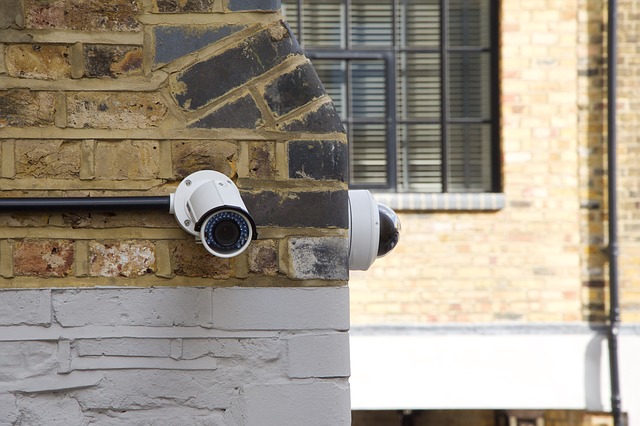You will not be surprised to know that most of the PoE cameras have a maximum distance of 100m. The 100m is the standard distance for most end devices and PoE cameras. The PoE cameras and the end devices can be extended using single-mode fiber or multimode fiber cables. However, fiber optics are not a common alternative in many projects. This post will explain how to run PoE cameras for more than 100 m. Also, the companies where you can get these extenders. So keep reading.
PoE cameras are the most popular cameras in the market today. But they have had their fair share of challenges. One of the issues is the inability to run a PoE camera for long distances. The maximum range of the PoE camera is 100m. Many engineers often complain that after 90m or some even 100 m the connection starts to drop. So how do we solve this problem? Well, it is relatively simple. Let’s look at how you can run a PoE camera for a longer distance.
How do PoE cameras function?
First of all, let’s take a look at the PoE camera system and how they work. The PoE camera is powered by a power supply unit (PSU) that has an output voltage of 48 VDC to 60 VDC. This is given to a Power sourcing equipment (PSE) responsible for splitting the power into three phases. A phase is then supplied to the camera.

Power losses occur in PoE applications due to cable resistance. That is why the PoE standard specifies a higher PoE output voltage for PSE (Power Sourcing Equipment) than the PoE output voltage at the destination (a PoE Powered Device) (PD). The voltage determines the amount of power available to a PoE-powered device. PoE injector ports and PoE powered devices must meet the following voltage, wattage, and current requirements to meet the PoE standard:
Table: Standard PoE parameters and comparison
| Property | 802.3af | 802.3at |
| Power available at PD | 12.95 W | 34.20 W |
| The maximum power delivered by PSE (Power Sourcing Equipment) | 15.40 W | 34.20 W |
| Voltage range (at PSE) | 44.0–57.0 V | 50.0–57.0 V |
| Voltage range (at PD) | 37.0–57.0 V | 42.5–57.0 V |
| Maximum current | 350 mA | 600 mA |
| Maximum cable resistance (100M cable) | 20 Ω (Category 3) or lower | 12.5 Ω (Category 5) or lower |
| Supported cabling | Category 3 and Category 5 or higher | Category 5 or higher |
| Supported modes | Mode A (endspan), Mode B (midspan) | Mode A, Mode B |
It is crucial to do a cable power loss estimate in each PoE application to guarantee that the PoE PD devices have the necessary power. To determine the power loss due to cable resistance and the available power at the PoE powered device, use the following formula:
• Step 1 – Calculate Output Current
o Current = Pout/ Vout
Where:
- Current = Output current from PoE Switch
- Pout = Output power from PoE Switch
- out = Output voltage from PoE switch
• Step 2 – Calculate voltage drop across the cable due to cable resistance
o Vdrop = I Current * R cable resistance
Where:
o Vdrop = Voltage drop over the cable length due to cable resistance
o Rcable = Cable resistance
• Step 3 – Calculate the actual voltage (Vpd) at the destination (PoE PD device)
o Vpd = Vout – Vdrop
• Step 4 – Calculate the actual wattage (Pfi nal) available for the PoE PD device
o Pfi nal = Vpd * Icurrent
Solution:
The Long Range PoE+ Switch, when combined with an Ethernet cable coupler, helps you in dealing with the issue of IP camera deployment at a remote site from the main network while also enhancing overall network system operation stability.
Extend your PoE cable run
Long-distance PoE increases Ethernet transmission beyond the 100-meter limit while simultaneously injecting power over Ethernet cables to IP cameras, wireless access points, and other devices up to 500 meters away. It is designed for long-distance applications in remote locations with no AC outlets or networks, allowing your IP network devices to be put freely anyplace over a long distance. A long-range PoE switch is a network switch that supports long-range PoE beyond 100 meters without any additional PoE extension devices.
Because the long-range switch contains PoE ports, you can simply daisy chain two Ethernet cables (300m+500m) with the RJ45 coupler to expand the distance to 800 meters. Although merely a temporary solution for extending cable length, the coupler provides a feasible link between two independent cables for long-distance deployments. However, the more couplers you use, the higher the wire resistance and the larger the signal interference.
Please see the link below to buy long-distance PoE switches and adapters.
Cube Group Training Limited is the UK’s leading provider of Alarm and CCTV installation training. We offer a variety of courses from 1 day to 2 years. We cater to every level of interest and experience, so no matter what your background or knowledge we can find a course for you.
